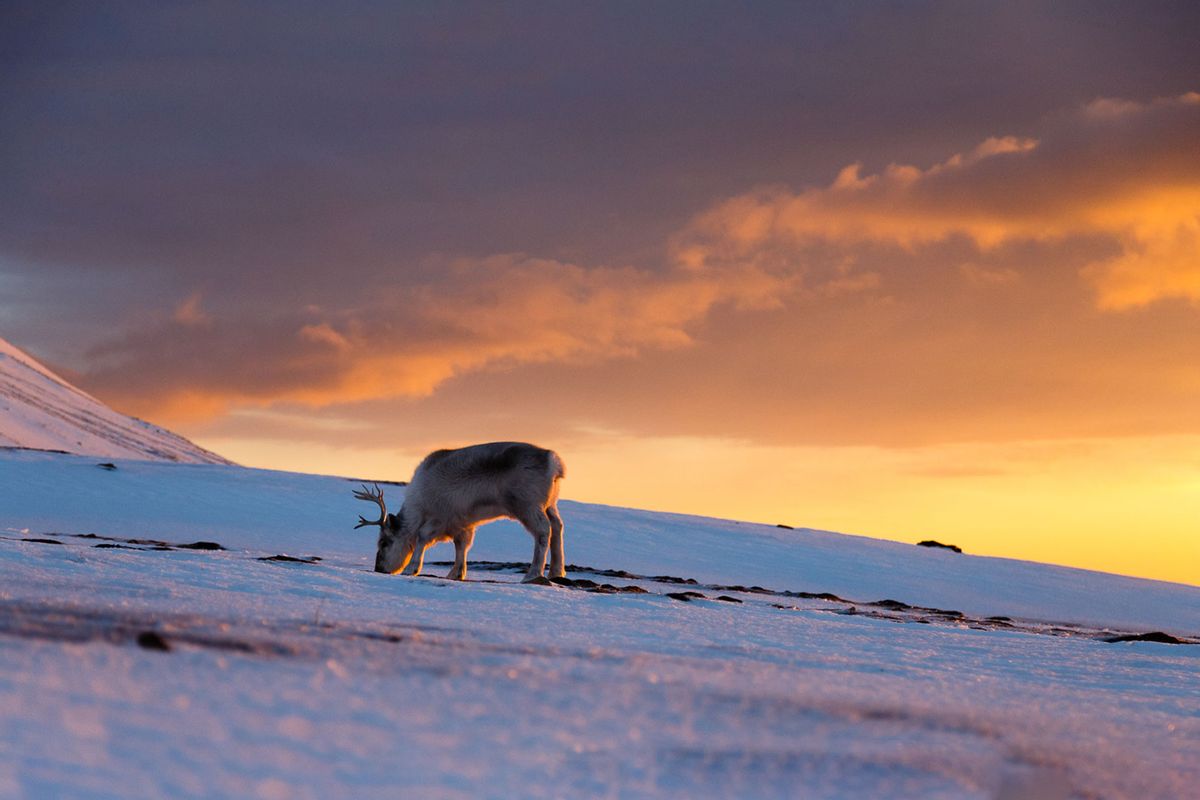Reindeer are traditionally associated with Christmas lore — and, if you follow the latest research on reindeer, you can see that there is a good reason for this. While real-life reindeer do not fly, they have a number of other freaky biological traits, and like Rudolph's nose, recent research is illuminating what makes reindeer tick.
For instance, a study in the journal Current Biology revealed that reindeer chew their cud while sleeping, an intriguing way in which reindeer eating habits are opposite those of humans. While humans are advised to avoid eating shortly before going to sleep, these Norwegian reindeer who are in the process of ruminating have brain waves similar to those present during NREM (non-rapid eye movement) sleep; in other words, when they undergo the complex process of chewing and digesting their food, the reindeer brains undergo a sleep-like experience. They even derive a benefit from this for periods when they are not ruminating.
"Having eaten all the oats the kids left out for them, the reindeer will need time to ruminate (chew their cud) and catch up on the sleep they didn’t get while delivering presents," Dr. Gabi Wagner, a chronobiologist from the Norwegian Institute of Bioeconomy Research, told Salon by email, both literally and figuratively tongue in cheek.
“The more reindeer ruminate, the less additional non-REM sleep they need,” first author and neuroscientist Melanie Furrer of the University of Zurich, said in a statement. “We think it's very important that they are able to save time and cover their sleep and digestive needs at the same time, especially during the summer months.”
The reindeer being monitored are owned by the Arctic University of Norway in Tromsø, where they live in outdoor enclosures that resemble that of wild animals — but they have also grown accustomed to humans.
Want more health and science stories in your inbox? Subscribe to Salon's weekly newsletter Lab Notes.
"To protect the health of Rudolph's eyes, kids might want to think about orange juice and carrots as ideal treats."
"To help them get familiar with us, we spent a lot of time just being with them," Wagner explained. "Thanks to all these long term preparations, the animals accepted that we glued the electrodes onto their skin to measure brain activity (EEG). This is a non-invasive method used in the children’s hospital in Zuerich, where first author Melanie works." Wagner added that surveillance cameras enabled the scientists to monitor the reindeer remotely.
It's not just reindeer sleep habits that are odd, but also their vision. Namely, they can detect ultraviolet (UV) light, which is unusual for most mammals. Dr. Nathaniel J. Dominy, an anthropologist from Dartmouth College, explained that human eyes can be damaged by seeing UV light, which is why they block it as much as they can.
"But ascorbic acid (Vitamin C) is a great way to repair UV damage and reindeer eyes have lots of it," Dominy explained. "So, to protect the health of Rudolph's eyes, kids might want to think about orange juice and carrots as ideal treats."
To make matters even more mysterious, scientists aren't sure why reindeer can see UV light in the first place. Dominy's research on the matter, recently published in the journal i-Perception, proposes that it helps Scottish reindeer feast on their primary food source, lichen.
"In contrast to every other species of ruminant, reindeer graze on lichens, especially during winter," the study explains. "The idea that reindeer use UV vision to detect vegetation amid snow was suggested almost a decade ago, with evidence that vascular plants — but not lichens — are visually distinctive in snow."
While those authors studied a type of lichen that reindeer do not eat, however, Dominy and the other contributors to his study investigated Cladonia rangiferina, which reindeer very much enjoy. While it was difficult for the researchers to spot this lichen amidst the spring snowmelt with just their human eyes, their spectral data revealed that lichen could be very apparent to reindeer during the twilight.
"They also cast new light on the benefits of a luminescent nose — it may light the way for Santa to see by, but it is Rudolph's blue-eyes that allow him to find dinner after a long Christmas season," the Dominy and his co-authors write. If anything, he added, the bigger enigma is why reindeer enjoy this lichen, which is much less nutritious than the plants preferred by large herbivores like reindeer.
"Smaller mammals (think rabbits, pikas) can eat lichens, but their caloric needs are far less than, say, a moose or bison. A reindeer's ability to subsist on lichens is a mystery — an animal of its size shouldn't be able to do it," Dominy explained. "But it is mainly a winter phenomenon, suggesting lichens are a food of last resort."
We need your help to stay independent
Dominy had one other observation about how the science of light can inform reindeer behavior on Christmas, drawing on a 2015 scientific article for children he wrote explaining Rudolph the reindeer's iconic red nose.
"Although rare, red luminescent noses are optimal for human aviation under foggy conditions," Dominy told Salon. "Red light travels farther, or rather scatters less, than other colors, which is why airports and towers use red blinking lights. So Rudolph's red nose is ideal for Santa's vision and need for safe navigation at night, whereas Rudolph's vision is optimal for detecting his favorite food under winter twilight."
Wagner also had a Christmas-related observation about reindeer that related to her study on their rumination and sleep habits.
"As reindeer do not sleep more in winter than in summer and also do not eat as much, they should have enough time to bring the presents," Wagner pointed out.

Shares